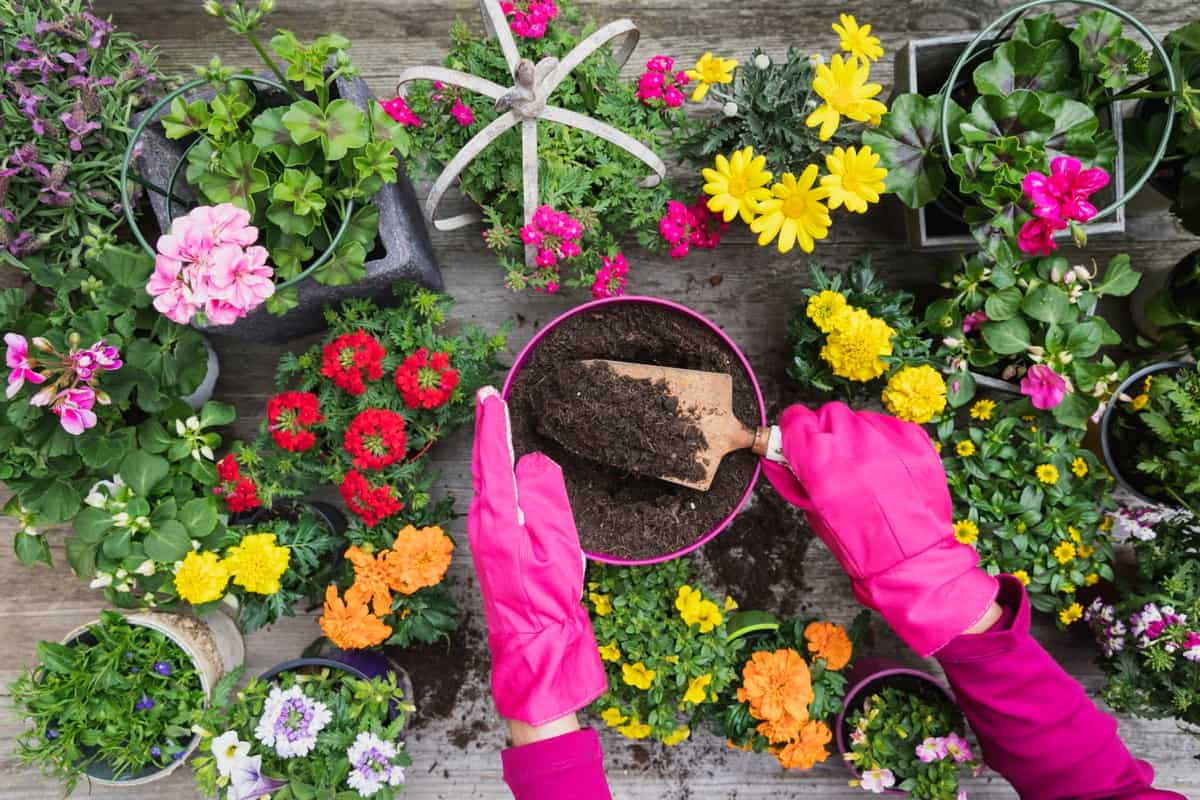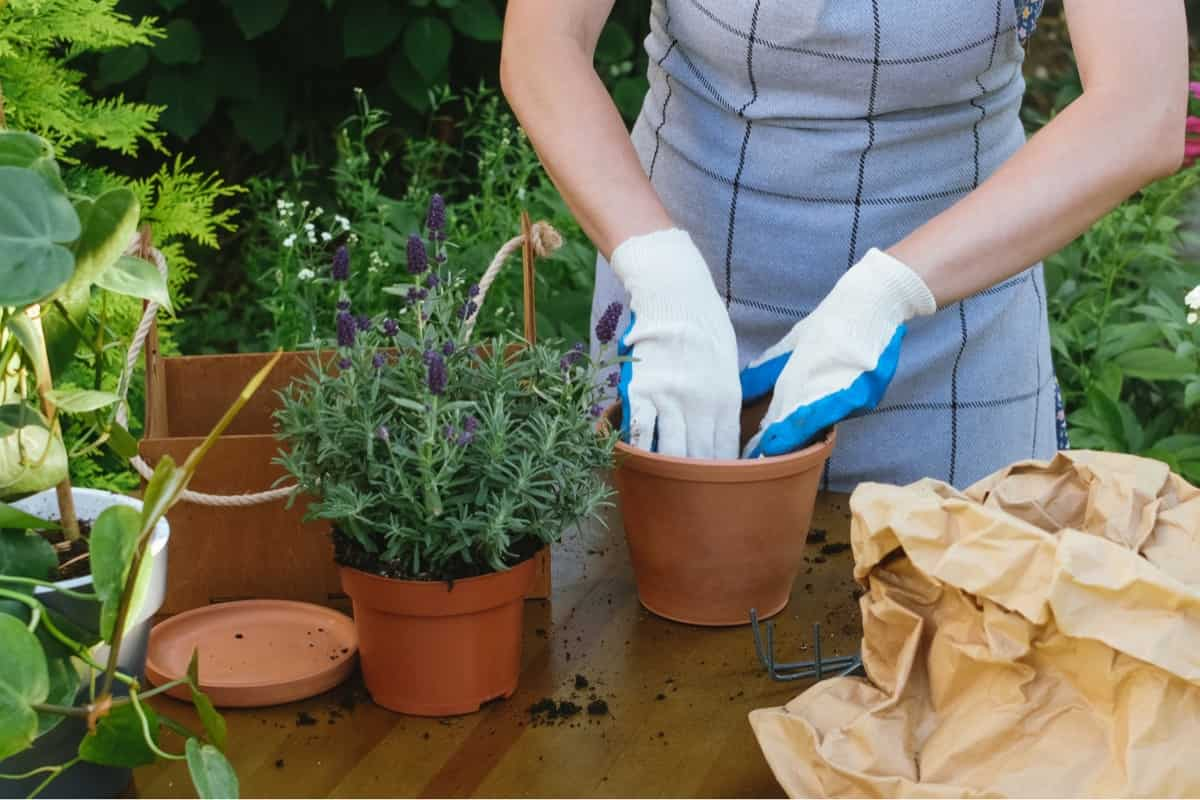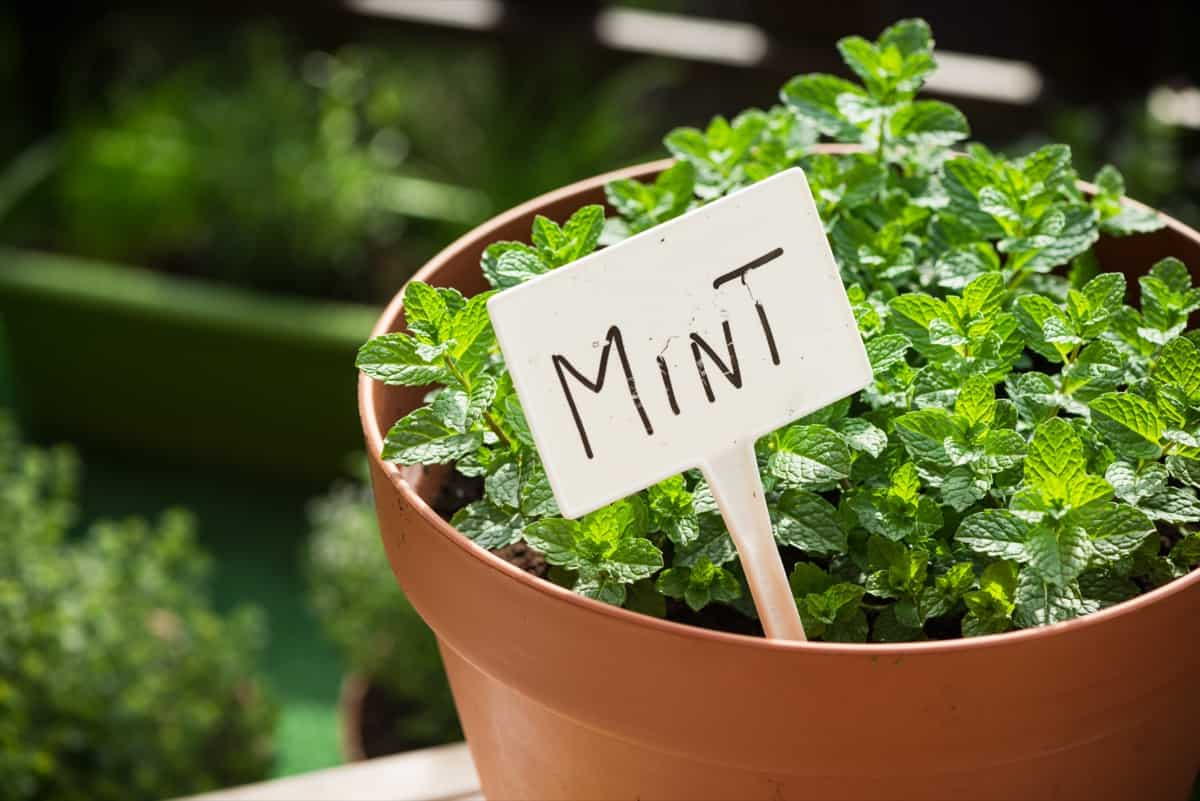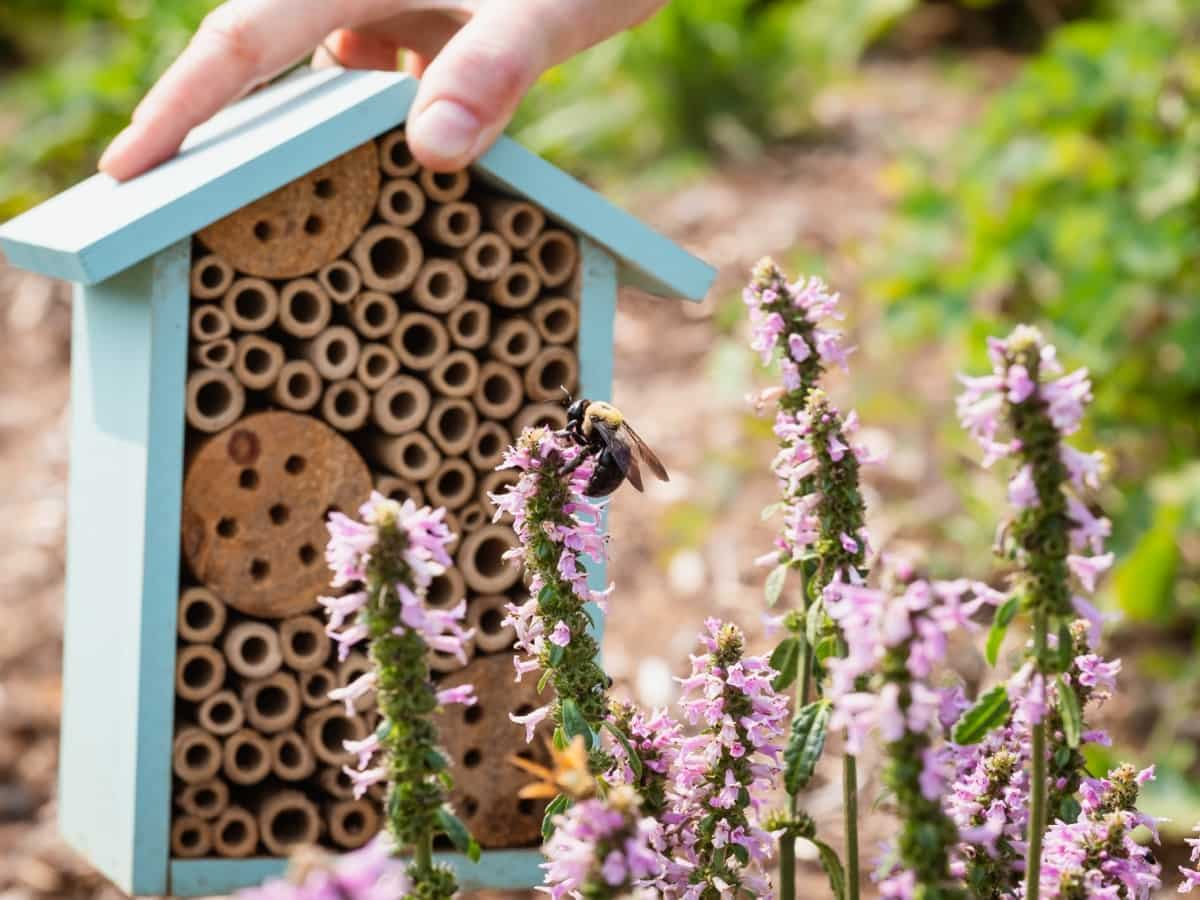Creating a pollinator-friendly garden is not only beneficial for the environment, but it can also bring beauty and life to your outdoor space. Container pollinator plants come in all shapes and sizes, making them perfect for any size garden. From vibrant annuals to native species, there’s an array of options to attract bees, butterflies, and other essential pollinators.
In addition to selecting the best container plants for pollinators, provide a water source where insects can take a drink safely. Avoid using pesticides in your garden since they harm pollinators and humans. Creating an inviting environment filled with diverse plant species that bloom at different times of the year will provide food and habitat for many essential pollinators. Your efforts will help support these vital creatures crucial to our ecosystem’s health.
Introduction to Container Gardening for Pollinators
Container gardening is a popular way to bring beauty and greenery to any space, whether with a large backyard or a small balcony. Pollinators like bees, butterflies, and hummingbirds are essential for reproducing many plants, including food crops. By creating a pollinator-friendly container garden, you enhance your outdoor space and contribute to the conservation of these vital creatures.

Container gardening offers several advantages when it comes to attracting pollinators. Containers allow for greater control over soil quality and drainage, ensuring that your plants have optimal conditions for growth. Containers can be placed strategically in sunny or shady spots depending on the needs of different plant species.
Understanding the Importance of Pollinators in Container Gardens
In container gardens, these tiny creatures are even more essential as they help ensure the successful reproduction of plants. Without pollinators, many plants would not be able to reproduce effectively. Additionally, bee-friendly balcony plants contribute to biodiversity by attracting many species.
Container gardens provide an excellent opportunity for urban dwellers or those with limited space to support pollinators. By creating a welcoming environment for pollinators in your container garden—providing them with food sources throughout the growing season—you are helping to protect these vital creatures while also enjoying the beauty they bring to your outdoor space.
Factors to Consider When Choosing Container Plants for Pollinators
It’s important to select plants that bloom at different times throughout the growing season. This ensures a continuous pollinator food source and keeps them returning to your garden. Opt for native plant species as they adapt well to local conditions and attract native pollinators. Research which plants are indigenous to your area and incorporate them into your container gardens.
Different pollinators have different tongue lengths, so choose flowers with varying shapes and sizes. Tube-shaped blooms like Salvias attract hummingbirds, while bees and butterflies favor flat-topped flowers like Coneflowers. Look for plants that produce ample amounts of nectar, the main energy source for many pollinators. Avoid using pesticides in your container gardens, as they can harm pollinators.
Create dense container plantings to provide shelter and resting places for tired insects during their busy feeding routines. Include a water feature like a shallow dish filled with pebbles or rocks in your container garden to provide thirsty bees and butterflies drinking spots. By including the best-potted plants to attract bees in your garden or balcony space, you can create an inviting oasis for our essential pollinator friends – the bees.
Best Container Plants for Pollinators
Sun-loving Container Plants That Attract Pollinators
One popular choice is the Butterfly Bush, known for its long clusters of fragrant flowers that butterflies find irresistible. Another sun-loving option is the Purple Coneflower, which not only adds a pop of color but also attracts bees and butterflies with its nectar-rich blooms. If you’re looking for something unique, consider planting some Mexican Sunflowers. Their bright orange petals are like beacons for hummingbirds and butterflies.
To create a diverse ecosystem, including native wildflowers like Coreopsis or Blanket Flower. These hardy plants can tolerate heat and drought while providing food for pollinators. Many herbs thrive in sunny conditions, attracting bees with their delicate flowers. Try planting Lavender or Rosemary in your containers; they smell wonderful and provide nectar sources for bees.
Shade-tolerant Container Plants for Pollinator Gardens
When creating a pollinator-friendly container garden, don’t let a lack of sunlight dampen your spirits. Plenty of shade-tolerant plants can attract bees, butterflies, and other pollinators even in the darkest corners of your outdoor space. One popular option is the Impatiens plant, which thrives in shady conditions and produces vibrant blooms that act like beacons for pollinators. Another great choice is the Hosta plant, known for its large leaves and delicate flowers that provide nectar sources for bees.
For those looking to add height to their shade garden, consider Ferns or Astilbes. These beautiful foliage plants create an enchanting atmosphere, offering shelter and food for insects like moths. If you aim to cultivate a more wildflower-like feel in your shade garden, try planting native species such as Columbine or Bleeding Heart. These plants add color and texture and support native pollinators by providing them with familiar food sources. Even if your balcony or patio doesn’t receive much sun, you can still create a haven for pollinators by incorporating shade-loving annuals for pollinators into your container garden.
Drought-tolerant Container Plants for Pollinators
One excellent option is the Lavender plant. Known for its beautiful purple blooms and fragrant scent, Lavender is a favorite among bees, butterflies, and pollinators. Its ability to thrive in dry conditions makes it an ideal container choice. Another drought-tolerant plant that attracts pollinators is the Yarrow.
In case you missed it: Cool-season Plants for Pollinators: Vegetables, Flowers, Fruits, Shrubs, and Herbs

With its clusters of small flowers in shades of white, yellow, pink, or red, Yarrow provides nectar for bees and butterflies throughout the summer months. Sedum is another fantastic choice for drought-tolerant container gardens. This succulent plant comes in various colors and forms, from compact ground covers to tall flowering varieties. Sedums are irresistible to butterflies, providing them with much-needed sustenance during dry spells.
Perennial Container Plants for Year-round Pollinator Support
Perennial plants are the way to go when attracting pollinators to your container garden year-round. These hardy plants return yearly, providing a consistent food source and habitat for bees, butterflies, and other important pollinators. The Bee Balm is a great choice for a perennial container plant, which blooms mid-summer through early fall. Its vibrant flowers attract pollinators and add color to your garden.
Another option is Yarrow, which produces clusters of tiny flowers in various shades of white, pink, or yellow. This versatile plant can thrive in both full sun and partial shade. Consider planting Purple Coneflower in your containers for those seeking a taller option. Its daisy-like flowers provide nectar throughout the summer and even into early fall. Try growing Coral Bells if you prefer something with a more delicate look.
Fragrant Container Plants That Attract Pollinators
Fragrance adds an extra dimension to any garden, and when it comes to attracting pollinators, fragrant container plants are a surefire way to entice them. The sweet scent of these flowers appeals to our senses and acts as a beacon for bees, butterflies, and other beneficial insects. One popular choice is Lavender, known for its delightful aroma that wafts through the air. Bees flock to its purple blooms in search of nectar and pollen. If you prefer citrusy scents, consider planting Lemon Balm in your containers.
In case you missed it: 8 Easy Seeds to Start for Beginners: For Flowers, Fruits, Herbs, and Vegetables

It will release a refreshing fragrance and serve as a host plant for butterflies like the Eastern Tiger Swallowtail. For those who love floral scents reminiscent of roses, try planting Heliotrope. Its tiny clusters of purple or white flowers emit a lovely vanilla-like fragrance irresistible to bees and butterflies. Other fragrant options include Sweet Peas, which come in various colors and have a deliciously sweet scent. And don’t forget about herbs like mint or thyme; their aromatic leaves attract pollinators while adding flavor to your culinary creations.
Colorful Flowers for Container Gardens to Attract Pollinators
Colorful flowers can add a vibrant touch to any container garden while attracting pollinators. These beautiful blooms provide a feast for the eyes and serve as valuable food sources for bees, butterflies, and hummingbirds. When choosing colorful flowers for your container garden, consider selecting varieties that have bright hues like reds, purples, yellows, and oranges.
One popular choice is the Zinnia, which comes in an array of bold colors and attracts butterflies with its nectar-rich blooms. Another option is the Cosmos flower, known for its delicate petals and ability to lure bees and butterflies. If you want to attract hummingbirds to your container garden, try planting some Salvias or Petunias.
These trumpet-shaped flowers are irresistible to these tiny birds with their sweet nectar-filled blossoms. Consider incorporating Marigolds or Snapdragons into your containers for a pop of color throughout the growing season. These plants come in various shades and will continue blooming well into fall. Remember to choose colorful flowers suitable for your specific growing conditions – whether full sun or partial shade – to ensure they thrive in your container garden.
Herbs and Edible Plants That Attract Pollinators in Containers
When attracting pollinators to your container garden, herbs, and edible plants are an excellent choice. Not only do they provide a source of fresh ingredients for your culinary endeavors, but they also serve as magnets for bees, butterflies, and other beneficial insects. One herb that is beloved by pollinators is Lavender. Its fragrant purple blooms add beauty to your container garden and attract bees in droves.
In case you missed it: 18 Common Mint Plant Problems: How to Fix Them, Solutions, and Treatment

Another popular choice is Basil, which produces small white or pink flowers that are irresistible to bees. Mint is another great option to attract pollinators while adding a refreshing flavor to your drinks or dishes. Bees especially love the nectar-rich flowers of Mint plants. If you want a unique addition to your container garden, consider planting Borage. This herb produces stunning blue star-shaped flowers that bees adore. Additionally, its leaves can be used in salads or steeped in tea.
Compact and Dwarf Varieties of Plants for Small-space Container Gardens
Container plants to attract butterflies are a beautiful addition to any garden or balcony. These fluttering creatures are not only mesmerizing to watch, but they also play a crucial role in pollination. One fantastic option is the compact butterfly bush, which blooms with vibrant flowers that attract hummingbirds, butterflies, and bees.
This beautiful and highly fragrant plant makes it a sensory delight for you and the pollinators. Another excellent choice is the dwarf Lavender. This plant attracts bees like a magnet with its aromatic foliage and stunning purple flowers. Plus, you can enjoy harvesting the fragrant Lavender blooms for various culinary uses or crafting homemade beauty products.
For those who prefer herbs in their container gardens, consider growing compact varieties such as Basil or Thyme. These herbs provide delicious flavors to enhance your cooking and act as nectar sources for beneficial insects like bees and butterflies. Remember that even though these plants are compact, they require proper care and maintenance. Ensure they receive sunlight and water regularly without overwatering, and fertilize appropriately according to their needs.
Low-maintenance Container Plants That Attract Pollinators
When it comes to container gardening, low-maintenance plants are a game-changer. They allow you to enjoy the beauty of pollinator-attracting flowers without spending hours on upkeep. These plants are perfect for busy individuals or those new to gardening. One excellent choice is the Sedum plant. With its succulent leaves and vibrant blooms, Sedums are easy to care for and attractive to bees and butterflies. Another low-maintenance option is Lavender, known for its fragrant purple flowers that attract many pollinators while requiring minimal attention.
In case you missed it: Top 11 Beautiful Color Changing Flowers

If you’re looking for something with a pop of color, consider planting Zinnias in your containers. These annual flowers come in various shades and shapes and provide nectar-rich blooms that bees adore. For those seeking an elegant touch, Geraniums are an ideal choice. Available in different colors like pink, red, and white, these beautiful flowers require little maintenance while still drawing in pollinators with their enticing scent. Many herbs, such as Basil and Rosemary, add flavor to your meals and entice beneficial insects like bees into your garden.
Tips for Making a Successful Pollinator-friendly Container Garden
Opt for large containers to accommodate the root system of your chosen plants, but not too big that they overshadow other plants in your garden. Native Pollinator Plants for Containers are well-adapted to local conditions and attract a wide range of native pollinators. Research which native plant species are suitable for container gardening in your area and incorporate them into your garden.
Plant flowers with different blooming periods throughout the year to ensure a continuous pollinator food source. This will also add visual interest to your container garden. Different pollinators prefer different flower shapes and colors, so aim for diversity in your selection. Consider incorporating tubular-shaped flowers for hummingbirds or flat-topped flowers like daisies for butterflies.
Pesticides can harm beneficial insects, so opt for organic pest control methods, such as companion planting, or natural predators like ladybugs. Create small shelters by adding rocks or wood piles near your containers to provide resting spots for pollinators. Additionally, include shallow dishes filled with water or damp sand where butterflies can drink and bees can hydrate. Removing spent flowers encourages new blooms and extends the flowering period, providing more nectar sources for hungry pollinators.
Plant combinations can be mutually beneficial when planted together because they can repel pests or enhance each other’s growth; examples include Marigolds with Tomatoes or Basil alongside Roses. Regularly check your containers’ soil moisture levels and adjust watering accordingly. One of the best annuals for attracting pollinators is the classic Marigold. These flowers come in various shades of orange and yellow, and their scent also acts as a natural repellent against pests like aphids.
Conclusion
Creating a container garden that attracts pollinators benefits the environment and adds beauty and vibrancy to your outdoor space. When selecting your container plants, consider sunlight requirements, water needs, fragrance preferences, and plant size. Don’t be afraid to mix different varieties of flowers with herbs or edible plants for added interest and functionality.
In case you missed it: Top 20 Garden Plants That Attract Pollinators to Your Garden

And don’t forget about low-maintenance options if you’re short on time or have limited gardening experience. By implementing these tips and being mindful of the needs of pollinators in your container garden design choices, you’ll enjoy a flourishing display and contribute to the conservation of these vital creatures.
- Gardening Techniques in Planting Vegetables
- Where to Place Indoor Plants in Your Home
- How to Grow Tomatoes Organically at Home: A Comprehensive Guide
- Organic Gardening on a Budget: Low-Cost Methods and Materials
- Gongura Seed Germination and Planting Methods
- Cabbage Seed Germination and Selection
- Broccoli Seed Germination and Selection
- Asparagus Seed Germination and Variety Selection
- Seasonal Flower Gardening: Best Practices for Spring, Summer, Fall, and Winter
- How to Grow Hibiscus from Flower
- Plantation Ideas for Home Decoration: A Beginners Guide
- Flower Garden Designs and Layouts for Beginners
- Planting and Spacing Techniques in Papaya: A Beginner’s Guide
- Growing Gold: Essential Techniques for Planting Pineapples
- How to Make Kalanchoe Plant Bushy: Home Remedies and Solutions
- 11 Reasons Why Your Gardenia is Not Blooming: Home Remedies and Solutions
- Eco Elegance: The Guide to Designing a Drought-Tolerant Landscape
- Gardening on a Slope: Strategies for Hillside Landscaping
- Nourish and Flourish: Top Organic Mulches for Thriving House Plants
- Everything You Want to Know about Indian Mogra Flower: Discover Uses and Growing
- Green Thumb Success: Expert Tips for Cultivating Greenhouse Pumpkins All Year Round
- Maximize Growth & Flavor: The Ultimate Guide to Companion Planting in Herb Gardens
- How to Control Rhododendron Problems Naturally: Home Remedies and Organic Ways to Fix Them
- Natural Magic: The Remarkable Benefits of Cinnamon for Plants
- Best Steps to Revive Dying Tulip with Natural and Organic Treatment
- 10 Reasons Why Your Angel Trumpet is Not Blooming: Remedies and Treatment
- How to Fix Periwinkle Leaf and Flower-Related Problems: Natural Remedies and Solutions
- How to Fix Zinnias Leaf and Flower Problems: Discover Natural and Home Remedies
- Organic Steps to Induce Lemon Tree Flowers: A Comprehensive Guide
- Bloom Booster: Crafting the Perfect Homemade Bougainvillea Fertilizer
- Optimizing Growth: A Guide to Applying NPK Fertilizer for Potted Plants
- 10 Best Homemade Fertilizers for Rubber Plant: DIY Recipes and Application Method
- How to Boost Female Pumpkin Flowers: Effective Steps for More Flowers and High Yields
- Transform Your Indoor Garden: Top Benefits of Pink Salt for Houseplants
- 10 Best Homemade Fertilizers for Peacock Plants (Calathea): Easy DIY Guide
- Unlock Blooms: 9 Reasons Why Your Potted Chrysanthemum is Not Blooming